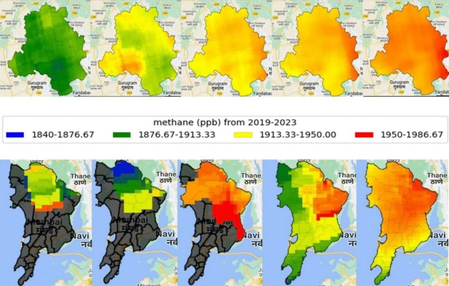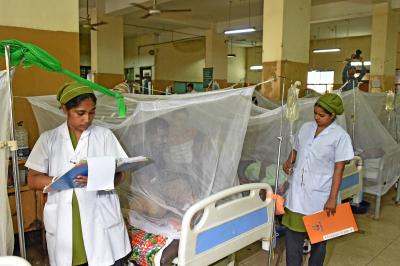
New Delhi, Oct 14 (IANS) Carbon dioxide (CO2) and methane (CH4) — greenhouse gases (GHG) — are rising over Delhi and Mumbai over the last few years, according to a study led by the Indian Institute of Technology (IIT) Bombay on Wednesday.
The study comes as Delhi is again experiencing ‘poor’ air quality with an air quality index (AQI) of 201. On Tuesday, the AQI stood at 211. Delhi AQI is expected to reach 346, categorised as very poor, by Friday evening.
Mumbai also saw a dip in air quality after the monsoon withdrawal. Last week, the city’s overall AQI averaged 153, based on readings from 25 of the 30 continuous air quality monitoring stations in the city.
Using remote sensing data, IIT B researchers Prof. Manoranjan Sahu and Adarsh Alagade measured GHG such as carbon dioxide (CO2) and methane (CH4) in metro cities such as Mumbai and Delhi.
They demonstrated that GHG levels in both cities are on the rise and that they show seasonal and spatial variations. Further, the researchers also developed city-specific statistical models to forecast the level of GHGs.
“By identifying trends and hotspots, satellite-based monitoring gives policymakers evidence to target the worst sources — for instance, prioritising landfill gas capture, traffic management in high-emission corridors, or industrial emissions enforcement — and to evaluate the real-world impact of policies over time,” said Sahu.
The team used data from NASA’s Orbiting Carbon Observatory-2 (OCO-2), which traces carbon dioxide, and the European Space Agency’s Sentinel-5P, which tracks methane.
Using satellite-derived measurements, the researchers observed CH4 and CO₂ concentrations over the last few years. This data also alerted the researchers to the emergence of methane hotspots, which were typically around regions with wastewater, landfills, or higher industrial activities.
The identification of such hotspots and the risks posed by waste management and rapid urban growth demonstrates how satellite data can play a major role in informing targeted policy interventions. CO2 concentrations were also observed to be rising over the years.
In addition, the team applied the Seasonal Autoregressive Integrated Moving Average (SARIMA) model. While data limitations restrict CO2 analysis for Delhi, the findings for Mumbai significantly contribute to understanding urban CO2 dynamics. The model also showed promise for CH4 forecasting.
“These findings underscore the utility of satellite data and forecasting models in monitoring urban GHG emissions. The observed rise in CO2 and CH4 concentrations highlights the urgency of implementing serious actions to address climate change,” the researchers said in the paper published in the journal Environmental Science and Pollution Research
Meanwhile, to curb pollution levels in the national capital ahead of Diwali celebrations, the Central Air Quality Management (CAQM) has imposed Stage 1 measures under the Graded Response Action Plan (GRAP) across Delhi-NCR.
–IANS
rvt/




